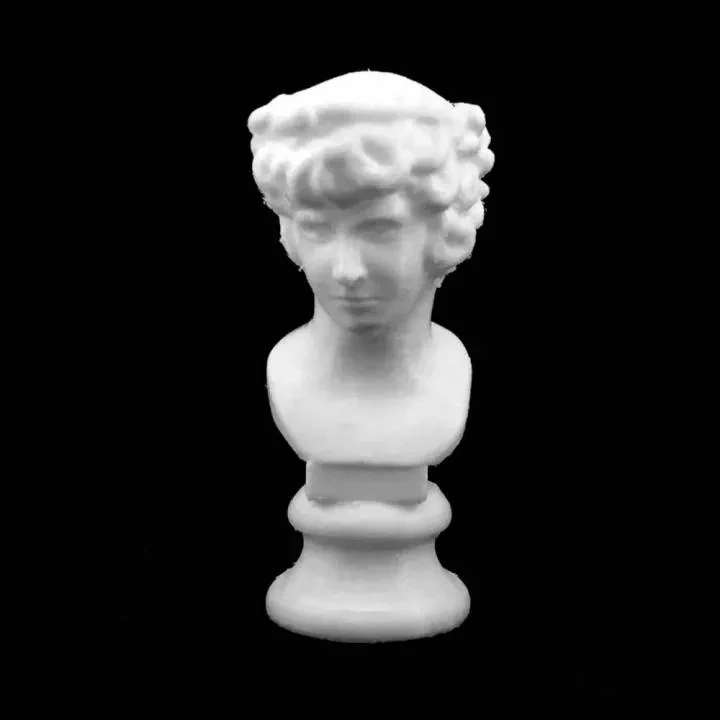
3D Printable Bust of Antinous as Dionysus at The State Hermitage Museum, St Petersburg by Scan The World
Antinous was a handsome youth, a Greek from Bythinia. The favourite of the Roman Emperor Hadrian (117-138), he was tragically drowned in the Nile during a drip to Egypt with the Emperor in 130. According to one version, he died saving the Emperor's life. After the death of Antinous, Hadrian ordered that he be deified. His statues, as the gods Dionysius or Hermes, adorned Hadrian's villa at Tivoli just outside Rome. The Hermitage portrait was found during excavations at Tivoli in 1769. Antinous is shown as Dionysius, god of wine and merrymaking, his luxuriant locks of hair crowned with a branch of Italian pine. The young man's face is classically handsome and his idealized features recall a Greek statue of the Classical period. At the same time there are still traces of individual features, such as the thick brows over the small, close-set eyes. The expression of sadness is typical of many statues of Antinous, who died so young. In European art, the image of Antinous became synonymous with ideal male beauty. This object is part of "Scan The World". Scan the World is a non-profit initiative introduced by MyMiniFactory, through which we are creating a digital archive of fully 3D printable sculptures, artworks and landmarks from across the globe for the public to access for free. Scan the World is an open source, community effort, if you have interesting items around you and would like to contribute, email stw@myminifactory.com to find out how you can help.Scanned : Photogrammetry (Processed using Agisoft PhotoScan) | Download free and paid 3D printable STL files
Download from myminifactory